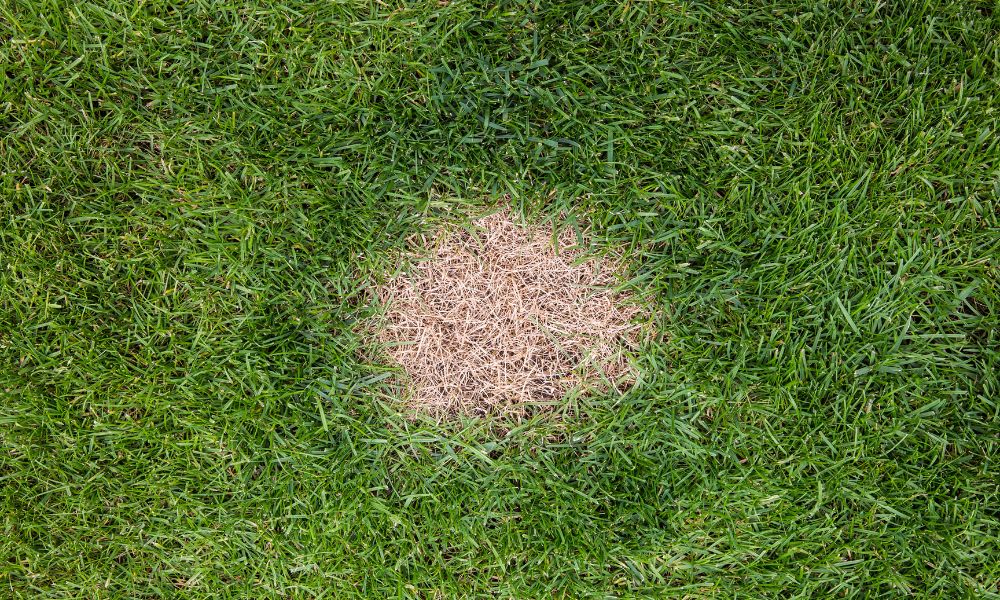Nothing is more frustrating than catching an insidious invader sabotaging your hard work on your lawn. If you’re noticing that areas of your lawn are mysteriously turning brown, you may be dealing with fescue brown patch. Use this guide to learn the telltale signs your yard is suffering from fescue brown patch so that you can know for sure what invader is wreaking havoc on your lawn and how to treat it.
Circular Patches of Discolored Grass
One of the first signs you’ll likely notice is the emergence of circular patches of discolored grass. Characterized by distinct borders and uniformly wilted or dead centers, these patches can be between six inches and several feet in diameter. The affected areas, which may vary in size and number, can spread rapidly during warm, humid conditions—the prime growing environment for fescue brown patch.
A Wilted, Water-Soaked Appearance
Upon closer inspection of the discolored patches, you may observe a wilted, water-soaked appearance in the grass. This is due to the fungal disease’s effect on the grass’s blades, which often become limp and soggy. The disease usually affects the leaf tissue first, resulting in a slimy, soft texture that eventually turns straw colored.
Irregular Grass Growth
Affected areas might show irregular growth or a matted-down appearance, especially in the morning when the grass is wet with dew. Fescue brown patch can cause the grass to grow poorly and with an uneven texture. It’s important to avoid mowing these patches when the grass is wet, as the excess moisture can facilitate the spread of the disease through the movement of fungal spores.
Lesions on Grass Blades
If you look closely at the afflicted areas with a magnifying glass, you might spot lesions on the grass blades. These lesions are often the key diagnostic features of fescue brown patch. Over time, the lesions can expand and become sunken, with a brown- to straw-colored center and a dark margin. These lesions give the disease its characteristic patchy or speckled appearance as they consume and decay the grass from the leaf tip to the sheath.
Thinning Grass
Finally, you may notice a general thinning of the grass in affected areas. This is the natural progression of fescue brown patch. As the disease damages more blades and spreads, the grass becomes less dense and eventually dies out, leaving you with unsightly bare spots.
Make sure to regularly check your yard for these signs of fescue brown patch, especially during the warm and humid months, when this disease is most prevalent. Remember, early detection is crucial in stopping the spread of this disease and restoring your yard to its lushness. If you recognize these signs, act promptly to avoid further damage. TurfPride has a lawn treatment program that can help you prevent and combat diseases and pests for a more vibrant yard.

